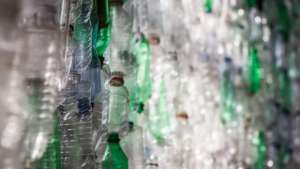From the Series

This past July, Southern Florida’s coastal communities were forced to declare a state of emergency as thick layers of green algae overwhelmed its counties. Known as algae blooms or blue-green algae, the out of control organisms – fed by human activity and climate change – kill underwater life at a rapid pace and can also cause rashes, stomach or liver issues and respiratory problems in those who ingest or swim in it. Bloom believes it can make use of the fresh water biomass.
A startup by California-based inventor Rob Falken, Bloom employs custom technology that carefully harvests wild algae to transform it into raw material that can be used in the production of clothing, sneakers and other products. Slated to hit stores sometime this month, their debut product is a foam traction pad for surfboards, developed in collaboration with legendary pro-surfer Kelly Slater.
The company uses a special mobile harvesting unit that is able to effectively vacuum up fresh water blooms, separate the algae and remove the excess nutrients before returning the clean water to its channel. The harvested algae is dried and pelletised before it is turned into a high performance flexible foam. It is also available as a 100 per cent algae-derived antimicrobial formulation, which cuts down on natural odours and prevents the spread of bacteria.
"The end goal is to remove as much of the petroleum feedstock as possible," Falken explains. "When you take a waste stream from nature—there naturally but there in such mass because of manmade inputs—we can take that feedstock, that problem, and functionalize it into usable goods that are the exact same quality, indistinguishable, from the status quo that's out there today."
While the harvesting unit is able to clean out toxic algae, only the healthy algae is used in the production of the material. Bloom is hoping to control the problems plaguing Florida – and other areas – by regularly harvesting the algae before it reaches a toxic state. Competitively priced and hypoallergenic, Bloom’s product represents a breakthrough in the continuous search for new and improved methods of sustainable product manufacturing.








